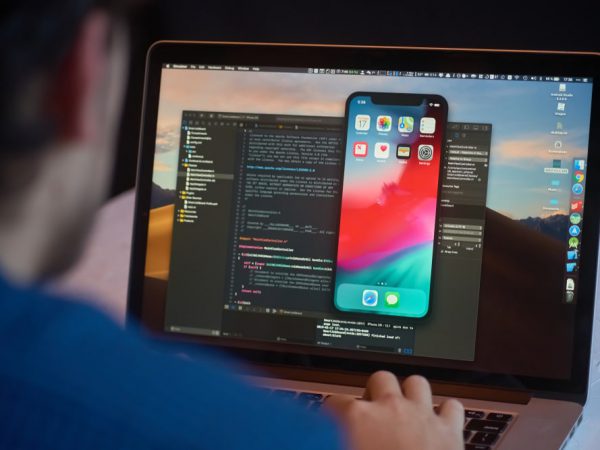
An offshore dedicated team model is cost-effective for companies that are willing to boost their productivity. The reason behind the growing popularity of hiring dedicated teams is quite simple: employing reliable professionals to join your internal team full-time is more expensive and time-consuming; it requires HR specialists, purchasing expensive equipment, software, and other expenses.
One of the major customer concerns, when deciding between outsourcing and hiring an internal IT unit, is project management and quality control issues. Taking on additional expenses to fully control the project development process might be reasonable, but as the dedicated team model assumes a full-time involvement of offshore professionals in the client’s project and a possibility to communicate and distribute tasks directly to each member of the team – the advantages of the DT model are becoming more obvious.
A dedicated team has a very transparent and simple pricing system: every month the client needs to pay the service provider a particular amount of money that depends on the size and composition of the offshore team and the contractor’s fee that comprises administrative and infrastructure expenses, and of course the margin.
The ultimate Advantages of the Dedicated Team Model include the following:
Focus on the expertise
The service provider takes upon himself the responsibility of finding IT experts with the appropriate knowledge and understanding of the client’s needs, while the client has complete control over the selection, motivation, and management of the members of the dedicated team. You also get wider access to technology-centered experts.
Cost savings
No infrastructure, hardware, or software expenses for the client. And it goes even deeper than that. Recruiting, employment and the related paperwork, employee education and training, organization of hardware and software capabilities, role assignment efforts – all these costly initiatives simply become obsolete.
Flexible management
You get the ultimate flexibility in cutting down or expanding the size of the dedicated team according to your project’s requirements. This allows avoiding or efficiently handling tons of unexpected pitfalls that may spawn extra costs and unwanted issues. With such a flexible approach, it’s easy to tailor the team to the specific project and retailor it at certain stages without hindering the general workflow.
In-depth control
The workload and scope of tasks are not fixed and change requests can be made at any moment. Coming from the above point, you can easily make changes in an ongoing project. Dedicated team members are always available for requests and customers are free to manage resources and plan project development according to their requirements. Reporting and time management should be clear and simple.
Collaborative benefits
Dedicated team members work in sync. They act as a project-focused, pre-trained “organism”, which contributes dramatically to the overall project success. You don’t have to bother with optimized team communication – dedicated professionals already know how to deliver results most jointly, hence, efficiently.
One of the most important features of the dedicated team model is that an offshore team is assigned to just one client. If a team member is working on a few projects for different customers simultaneously, his/her efficiency and motivation may suffer.
However, there are also some limitations to be mentioned:
- For short-term projects, the Dedicated Team model may be less efficient when compared to the fixed price scheme.
- The selection of team members should be taken very seriously, as without interviewing all of the offshore team members there is a risk of involving underqualified team members in your project.
- The client must take an active role in communicating and invest a lot of time into management.
- Different time zones can form a separate issue when it comes to timely communication and urgent requests.
With good project management, the client’s risks are minimal, and the dedicated team model will prove itself as an advanced and cost-efficient solution for software development outsourcing.
Do You Need a Dedicated Team Involved with Your Project?
There are definite benefits and certain nuances to hiring a dedicated team. Not every project by far needs one to be involved with it in the first place. Do you really require a DT input with your specific project? The following checklist can help you ultimately decide.
- Is there a lack of expertise or experience in your in-house team? If yes, a third-party team of narrowly-profiled specialists will certainly do you lots of good.
- Is the project in hand long-term? As we already said, it’s not a good idea to hire a dedicated team to handle a short-term project whereas it can focus all the expertise and professional stamina on a single long-term initiative.
- Is the project complex? Turning to third-party assistance can be the best solution when there is simply too much on the plate for your in-house team to handle.
- Do you want more control? As we mentioned, you get in-depth control over the whole project workflow and the team working on it.
- Is flexibility a major project workflow requirement? Hiring an in-depth managed dedicated team is most optimal when you know that the project will have to undergo changes and workflow shifts.
- Are you looking for maximum tracking/monitoring possibilities? Dedicated team management is utterly transparent and structured.
How to Pick a Dedicated Team?
Decided that you do need to hire a dedicated team to involve with your project but don’t know where to start? Just take it step by step.
- Check the portfolio. A good company or team has previously finished projects to boast. Make sure the portfolio of candidates has high-quality, market-valuable works as proof of experience and expertise.
- Ask for references. Don’t be shy to try and reach the clients, for whom the portfolio projects were completed. Thus, you can ask about how satisfactory was the work done first hand and find out if any feedback or project credits are simply made up.
- Elaborate on work specifics. Ask your potential workforce provider what work approaches they can offer – Agile, Scrum, or something else. Here, it’s best to conduct additional research in terms of what may suit your particular project best.
- Discuss rates and payments. The crucial thing – do the rates a dedicated team provider poses match your budget capabilities and in what format compensations are accepted? This is where, ideally, you should search for a good balance between a DT with an established reputation and plain professional workers with reasonable rates.
- Ask for certificates. There are industry certificates that only proven experts can have, take your time to check them and ask to see everything they have.
A usual dedicated team consists of the following specialists. Make sure that a provider is also capable of fulfilling all these positions:
- Project managers;
- Backend developers;
- Frontend developers;
- UX/UI designers;
- QA specialists;
- Business analysts;
- DevOps specialists.
Bottom Line
A good dedicated team helps ultimately boost the speed of project completion as well as the end product quality. Hiring a DT is almost always a great, cost-efficient way to go unless your project specifics can be handled easily without third-party involvement. We hope our discussion of when you need a dedicated team, why you may need it, and how to pick one helps you with your ultimate decision – to hire or not to hire a DT.



